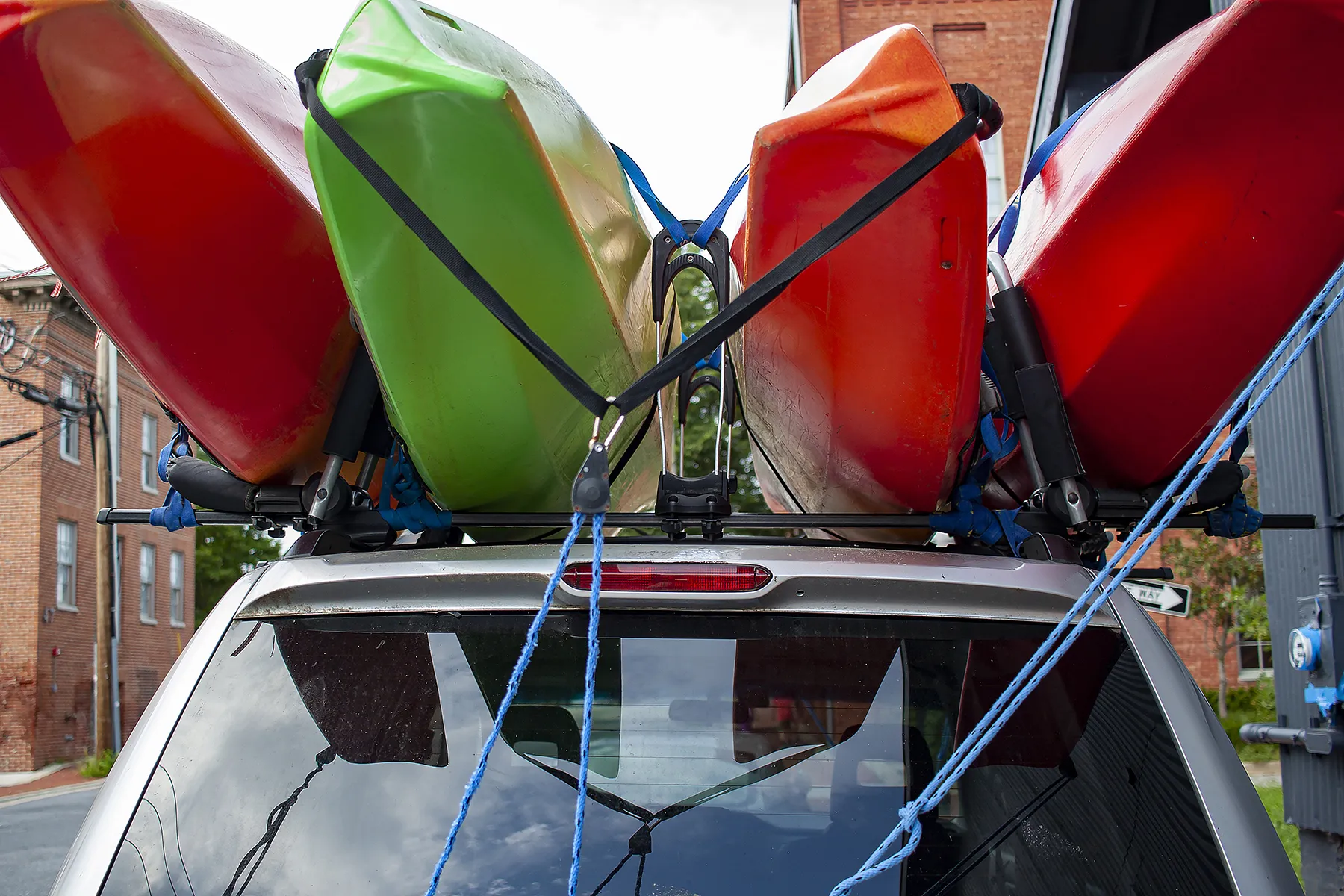
The Law Offices of Kyle E. Koester, a highly regarded and trusted legal firm, presents you with this comprehensive guide on how to safely transport summer sports equipment. The firm, led by managing attorney Kyle Koester, has a rich history of providing expert advice on matters relating to personal injury law, particularly in cases involving motor vehicle accident injuries. Based in Woodstock, GA and serving the surrounding areas, the firm has dealt with many cases where improper transportation of sports equipment has led to avoidable accidents and injuries.
To ensure the safety of athletes and sports enthusiasts alike, we’ve compiled our expertise into this essential guide. We’ll begin by advising you on how to check your equipment for any signs of damage, ensuring it is in peak condition before transport. We’ll also guide you on how to select appropriate packaging materials that consider the nature of your gear. We will share tips on how to lift and load your equipment to avoid personal injury, and how to secure it in your vehicle using cargo nets or straps.
If you’re traveling long distances, we’ll advise on how to keep your gear space secure during stops. We’ll also discuss the importance of cleaning and storing your equipment properly after each trip to maintain its longevity. We hope you find the tips and insights in these sections helpful and informative.
Key Takeaways
- Assess your sports equipment for damages and ensure it’s in top-notch condition before packing.
- Choose robust packaging materials suitable for your equipment, using bubble wrap or foam for fragile items.
- Use safe loading and unloading methods, keeping heavier items at the bottom and lifting with your knees.
- Secure your equipment in your vehicle with cargo nets or straps and check its security regularly during the journey.
- After transportation, inspect and clean your equipment thoroughly, making necessary repairs promptly.
Assessing Your Sports Equipment
Before you hit the road, it’s crucial to thoroughly examine your sports equipment to make sure it’s in good condition and safe for transportation. Whether you’re packing tennis racquets, golf clubs, or swimming gear, you can’t afford to overlook the smallest details.
Start by evaluating your equipment’s general condition. Are there any visible damages or wear and tear that could impact its performance or safety? You need to confirm that everything’s in top-notch shape to avoid unexpected failures or accidents.
Next, inspect the equipment’s structural integrity. This involves looking at seams, connections, and other critical components. If you discover any cracks, loosened screws, or other indications of damage, it’s time to repair or replace the equipment. Don’t jeopardize your safety or the longevity of your gear by disregarding these issues.
Choosing the Right Packaging Material
After you’ve verified your sports equipment is in top condition, it’s vital to choose the right packaging materials to safeguard your gear during transit. Poor packaging can damage your sports gear, and you don’t want that after confirming your equipment is in tip-top shape.
Start by considering the nature of your sports equipment. For sturdy, heavy-duty items like tennis rackets or baseball bats, you’ll need robust packaging materials. Cardboard boxes with corrugated layers provide excellent protection. They’re durable, readily available, and recyclable too, which is a bonus for the environment.
For more delicate equipment, consider bubble wrap or foam. These materials provide a cushion, absorbing any shocks or blows that could occur during transit. It’s crucial to ensure they cover the entire surface of the item. You don’t want any part of your equipment exposed or unprotected.
Don’t forget to secure your package with strong adhesive tape. It’ll keep your gear in place and prevent the box from opening during transportation.
Packing Techniques for Various Equipment
Now that you’ve got the appropriate packaging materials, let’s explore how to pack different types of sports equipment effectively and safely.
For balls such as basketballs, volleyballs, or soccer balls, slightly reduce their air pressure to prevent damage. Wrap each ball in packing paper, then place it in a suitably sized box.
When it comes to skates and rollerblades, use bubble wrap to safeguard the blades and bearings, then place them in a box with padding on all sides.
Rackets require special attention. Wrap each one individually in bubble wrap, focusing on the handle and strings, then place it in a racket bag or a box that fits snugly. For helmets, utilize bubble wrap or packing paper to fill in gaps and prevent movement within the box.
When handling surfboards, employ bubble wrap to safeguard the nose, tail, and rails. Place it in a board bag, then insert it into a box filled with packing peanuts.
For smaller items like gloves or caps, simply wrap them in packing paper and place them in a box. Always remember to securely seal your boxes with packing tape.
With these guidelines, you’ll guarantee your summer sports equipment arrives at your destination in prime condition.
Safe Loading and Unloading Methods
Once your equipment’s safely packed, it’s crucial to know the right way to load and unload your gear to prevent any damage. You should always lift with your knees, not your back, to avoid injury. Hold items close to your body, and avoid twisting while lifting, as this can strain your muscles.
When loading your gear, it’s best to place heavier items at the bottom and lighter ones on top. This will keep the heavier items secure and prevent them from crushing the lighter equipment. If you’re loading equipment in a van or SUV, make sure the heavier items are towards the front of the vehicle. This will help keep the vehicle balanced and make it easier to handle.
When unloading, reverse the loading process. Remove the lighter items first, then the heavier ones. This reduces the risk of items falling and causing damage or injury.
Securing Equipment in Your Vehicle
With your gear properly loaded, it’s time to ensure it’s securely fastened in your vehicle to prevent any movement during transport. This is vital as unsecured equipment can pose a safety risk, potentially causing damage or injuries if it shifts around while you’re driving.
Here are some key steps you should consider:
- Use cargo nets or straps: These are designed to hold items in place and can be easily adjusted to accommodate different sizes and shapes of equipment.
- Place heavier items at the bottom: This helps to stabilize the load and prevent lighter items from being crushed.
- Fill empty spaces: Use soft, flexible items like bags or clothing to fill gaps and prevent items from moving around.
- Check regularly: Make sure to inspect your equipment’s security frequently, especially on long trips or when driving on uneven terrain.
Travel Tips for Long-Distance Journeys
When you’re getting ready for a long-distance journey with your sports gear, planning ahead can help guarantee a smooth and stress-free trip. Begin by checking the weather forecast for your travel route. If storms are predicted, consider waterproof cases for your equipment.
Next, account for the room your gear will take up. You don’t want to overpack and risk damaging your equipment. If you’re traveling by car, remember to never leave your gear in a hot vehicle for long periods, as heat can warp and damage many types of sports equipment.
Also, think about security. If you’re making overnight stops, ensure your gear is safe. This might mean choosing accommodations with secure storage or taking turns keeping an eye on the gear.
If you’re flying, check your airline’s rules for sports equipment. Some may require it to be checked, while others allow it as carry-on. And don’t forget to clearly label all your gear with your name and contact information.
Lastly, keep your gear accessible. If you need to practice or play during your journey, you don’t want to dig through bags to find it. With a little preparation, you can make sure your gear arrives safe and ready for action.
Maintenance Tips Post-Transportation
After guaranteeing the safe transportation of your sports equipment, it’s just as crucial to focus on its maintenance post-travel to keep everything in top condition. Here are some useful tips you can follow:
- Always inspect your equipment after each trip. Check for any damages that might’ve occurred during transport. It’s better to address issues right away, rather than discovering them just before your next game or activity.
- Clean your gear thoroughly. Dust, dirt, and grime can accumulate during the journey. Use appropriate cleaning materials to ensure you’re not damaging the equipment.
- Store your gear properly. Proper storage preserves the lifespan of your equipment. Avoid damp, extreme temperatures, and direct sunlight, which could lead to deterioration.
- Make necessary repairs or replacements immediately. If you notice any damage or wear and tear, fix it as soon as possible. This helps to avoid further damage and ensures you’re ready for your next sports activity.
Frequently Asked Questions
What Are Some Specific Precautions to Take for Transporting Water Sports Equipment?
When transporting water sports equipment, you should always secure it properly. Use padded straps to prevent damage and cover sharp edges. Don’t forget to drain all water to avoid added weight and potential rusting.
How Does Weather Affect the Transportation of Summer Sports Equipment?
Weather greatly impacts your equipment transport. Hot temperatures can warp or damage gear, while excessive humidity might cause corrosion. It’s essential to protect and properly pack your equipment to prevent damage during transportation.
Is There Any Specific Insurance Coverage Recommended for Transporting High-Cost Sports Equipment?
Yes, you should consider getting specialized sports equipment insurance. It’ll cover the cost if your gear’s damaged while transporting. Always verify what’s included, as coverage can vary widely among different insurance providers.
Are There Any Special Considerations for Transporting Equipment by Air or Internationally?
Yes, for air or international travel, you’ll need to take into account weight limits and size restrictions. Also, customs regulations might impact what you can bring. Always check with your airline or shipping company beforehand.
How Long Can Sports Equipment Typically Be Stored During Transit Without Damaging It?
You can usually store sports equipment for several weeks during transit without damage. However, it is crucial to check each item’s specific care instructions as some may require special handling or temperature conditions.
Conclusion
So, you now know how to safely transport your summer sports equipment.
From inspecting your gear, choosing the right packing materials, perfecting packing techniques, understanding safe loading/unloading practices, securing your equipment in your vehicle, to making long-distance journeys and performing post-transportation maintenance.
Put these tips into practice to ensure your gear’s safety.
Always remember, proper transportation is crucial for your equipment’s lifespan.
But even with all these precautions, accidents can still happen. If you find yourself involved in a car accident while transporting your sports equipment, don’t hesitate to reach out to the Law Offices of Kyle E. Koester, LLC for a free car accident injury consultation.
With over 5 Million in settlements won for his clients, Koester Legal has the experience and expertise to help you navigate through these trying times.
Enjoy your sporty summer, but always remember we’re here to help if you need it.


